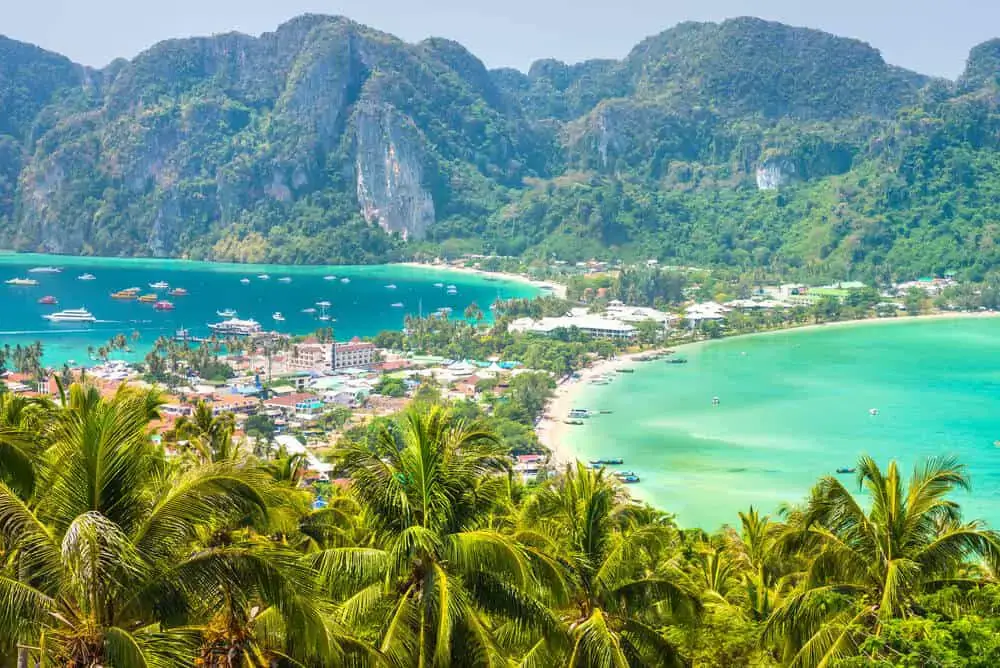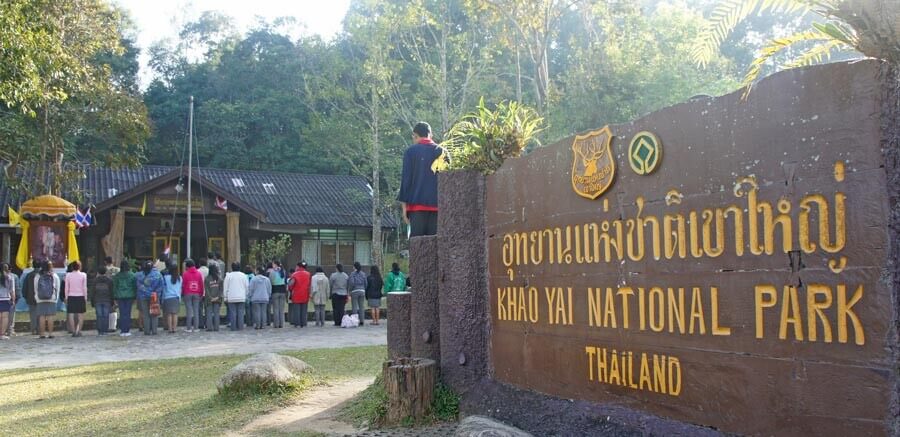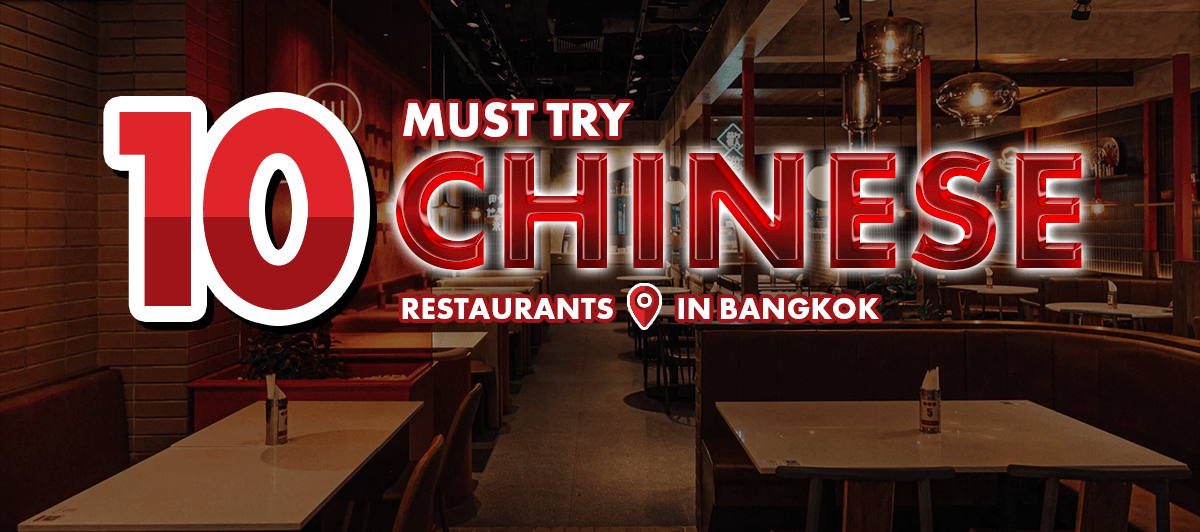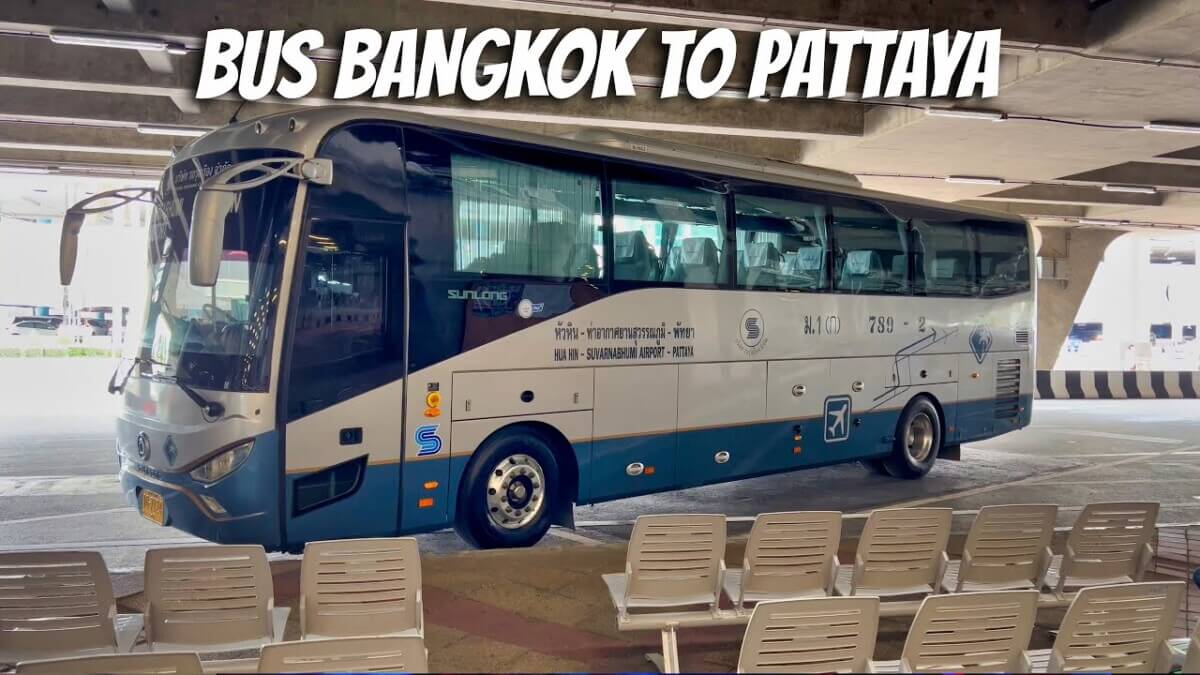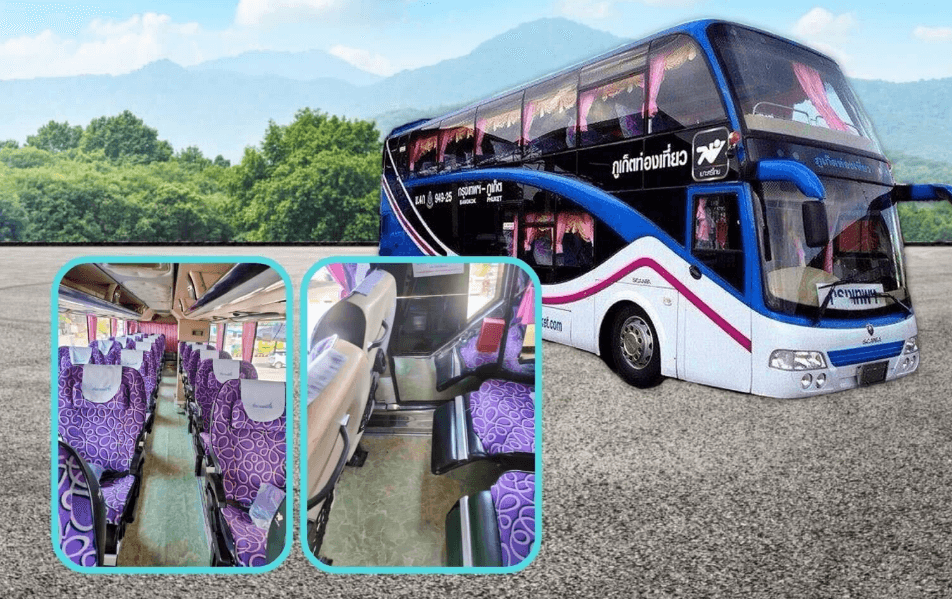Bangkok’s Southern Bus Terminal, universally known as Sai Tai Mai, serves as the critical transportation nexus connecting Thailand’s vibrant capital with the stunning southern provinces. This comprehensive guide delivers essential insights for travelers navigating Thailand’s largest bus terminal. As the primary departure point for journeys to beach paradises, cultural heartlands, and island gateways, understanding Sai Tai Mai’s operations transforms chaotic travel into smooth adventures. Whether you’re heading to Hua Hin’s coastal charm, Phuket’s azure waters, or Surat Thani’s ferry connections, mastering this terminal unlocks seamless southern exploration. We cover terminal navigation, ticket purchasing, service distinctions, and practical strategies – everything required for confident travel from Bangkok’s bustling hub to your dream destinations.
Understanding Sai Tai Mai’s Significance
Sai Tai Mai isn’t merely a bus station; it’s Thailand’s largest and busiest intercity transportation hub, facilitating over 20,000 daily passenger movements. Replacing the old Southern Bus Terminal on Borommaratchachonnani Road in the early 2000s, this modern complex was strategically relocated to its current Taling Chan district position west of central Bangkok. This shift improved accessibility via major highways like Rama II Road and the Bangkok Outer Ring Road, streamlining provincial bus operations.
The terminal’s immense scale reflects its critical role in Thailand’s transportation network. Spanning over 40 acres, Sai Tai Mai integrates long-distance buses, minivans, local taxis, and motorcycle taxis into a single interconnected ecosystem. It primarily services routes south of Bangkok, covering popular destinations like Hua Hin, Chumphon, Surat Thani (for Koh Samui/Koh Phangan), Phuket, Krabi, and Hat Yai, extending connections to the Malaysian border. Unlike the Northern (Mo Chit) or Northeastern (Ekkamai/Mo Chit 2) terminals, Sai Tai Mai specializes exclusively in southern routes, operating 24/7 to accommodate varied departure times.
Key distinctions define Sai Tai Mai’s operational model. First-class air-conditioned buses dominate long-haul routes, while minivans offer faster, more frequent service to nearer provinces. The terminal employs a systematic zoning approach: Building 1 handles minivans and provincial buses, Building 2 focuses on interprovincial routes, and dedicated sections serve private bus companies and ticket counters. This organization, though initially overwhelming, efficiently manages the constant flow of commuters, tourists, and cargo transport.
- Operational Hours: Open 24 hours daily, with peak departures 6:00 AM – 10:00 PM
- Primary Service Area: All provinces south of Bangkok including western routes
- Daily Passenger Volume: Estimated 20,000+ travelers during peak season
- Unique Feature: Thailand’s only 24-hour major intercity bus terminal
- Key Distinction: Exclusive focus on southern destinations unlike other Bangkok terminals
Strategic Location and Precise Directions
Sai Tai Mai occupies a strategic position at the intersection of Borommaratchachonnani Road (Highway 338) and Kanchanaphisek Road (Outer Ring Road) in Taling Chan district. Though technically within Bangkok city limits, its western location places it approximately 15 kilometers from the Grand Palace. This positioning provides direct highway access for southbound buses while necessitating thoughtful transit planning for travelers originating in central Bangkok districts.
Reaching Sai Tai Mai efficiently requires understanding Bangkok’s transit networks. The Bangkok Mass Transit Authority (BMTA) operates multiple direct bus routes to the terminal, including air-conditioned buses 124, 125, 127, 170, and 201, plus non-AC buses 4, 5, and 84. For travelers prioritizing speed, taxis offer door-to-door convenience, though traffic congestion significantly impacts travel time from Sukhumvit or Silom areas. Ride-hailing apps like Grab provide transparent pricing, typically costing 150-250 THB from downtown. Motorcycle taxis serve as efficient connectors between the terminal and nearby BTS Skytrain stations.
The terminal’s proximity to Bangkok’s Southern Railway Line offers alternative access. Travelers can take the SRT Dark Red Line commuter train from Bang Sue Grand Station to Taling Chan Station, followed by a short 15 THB motorcycle taxi ride. For those near the BTS Silom Line, the Wongwian Yai station connects via bus 84. Despite its seemingly peripheral location, Sai Tai Mai integrates with multiple transit layers, making accessibility dependent on strategic route selection rather than physical distance.
- GPS Coordinates: 13.7648° N, 100.4353° E
- Taxi Cost Guide: 150-250 THB from Sukhumvit, 180-300 THB from Silom, 200-350 THB from Khao San Road
- Recommended Bus Routes: AC Bus 124 (Victory Monument), 127 (Hualamphong Station), 170 (Samut Prakan)
- Nearest BTS Station: Wongwian Yai (connect via Bus 84)
- Train Alternative: SRT Dark Red Line to Taling Chan Station + motorcycle taxi
Terminal Layout and Facility Navigation
Sai Tai Mai’s layout comprises three primary structures designed for efficient passenger flow. The main terminal building (Building 1) houses ticketing counters, waiting areas, and essential services. Its ground floor features a central concourse with ticket booths organized by destination regions, clearly labeled in Thai and English. Digital departure boards display real-time status updates above each boarding gate cluster. The upper level contains restaurants, convenience stores, and seating areas overlooking the bus bays.
Adjacent to the main building, the minivan terminal (Building 2) operates provincial services with high-frequency departures. This separate structure prevents congestion between long-haul bus passengers and minivan travelers. A third auxiliary building hosts private bus company offices, premium lounge services, and administrative functions. Well-marked pedestrian walkways connect all sections, while color-coded signage (blue for buses, green for minivans) aids navigation.
Traveler facilities exceed basic expectations. Clean restrooms (5 THB fee) are available on both terminal levels. Multiple 7-Eleven and FamilyMart outlets offer snacks, drinks, and travel essentials. Free WiFi covers common areas, though signal strength varies. Paid luggage storage operates near Gate 14 (80 THB/day). Medical services include a first-aid station near the information booth and pharmacy kiosks. For comfort, air-conditioned waiting zones feature charging stations, while smoking is permitted only in designated outdoor areas.
- Key Zones: Main Terminal (Building 1), Minivan Terminal (Building 2), Private Bus Offices (Building 3)
- Essential Services: Information booth (Gate 7), luggage storage (Gate 14), tourist police booth
- Dining Options: Food court (Level 2), coffee shops, convenience stores, fresh fruit stalls
- Accessibility Features: Ramps, priority seating, wheelchair-accessible restrooms
- Tech Amenities: Free WiFi, mobile charging stations, SIM card vendors
Comprehensive Transportation Services
Sai Tai Mai offers tiered transportation options catering to diverse traveler needs. Government-operated buses (BKS) provide the most economical travel, classified into three service levels: ordinary non-AC buses for budget-conscious travelers, second-class AC buses with basic amenities, and first-class VIP buses featuring spacious seating, onboard restrooms, and complimentary services. Private operators like Transport Co., Ltd. and numerous regional companies offer premium alternatives with enhanced comfort features including business-class seating, personal entertainment systems, and meal service.
Minivan services operate as the workhorse for provincial routes under 300 kilometers. Companies like Roong Reuang Coach and Victory Association run frequent departures to destinations including Damnoen Saduak Floating Market, Kanchanaburi, Cha-am, and Phetchaburi. While minivans offer faster journey times due to smaller size and direct routes, luggage space limitations make them less suitable for travelers with large backpacks or multiple suitcases. Ticket purchases occur directly at the minivan terminal counters.
Long-distance bus travel times vary significantly by destination. Sample journey durations include: Bangkok to Hua Hin (3-4 hours), Bangkok to Chumphon (6-7 hours), Bangkok to Surat Thani (9-11 hours), Bangkok to Phuket (12-14 hours), and Bangkok to Hat Yai (14-16 hours). Night buses depart between 7 PM and 11 PM, featuring fully reclining seats ideal for maximizing daylight exploration time. Advance booking remains essential during holidays like Songkran (Thai New Year) or Loy Krathong when services sell out days in advance.
- Bus Class Comparison: Ordinary (cheapest), Second-Class (AC), First-Class (reclining seats), VIP (premium amenities)
- Major Operators: Bangkok Southern Bus Terminal Company, Transport Co., Ltd., private regional companies
- Popular Minivan Routes: Ratchaburi, Kanchanaburi, Cha-am, Phetchaburi, Damnoen Saduak
- Approximate Fares: Hua Hin (180-300 THB), Surat Thani (450-900 THB), Phuket (800-1,200 THB)
- Booking Channels: Terminal counters, official operator websites, authorized travel agents
Ticket Acquisition Strategies
Purchasing tickets at Sai Tai Mai involves navigating three primary options: direct counter purchases, automated machines, and advance online booking. The terminal features clearly marked ticket windows organized geographically – counters 1-20 serve western/southern routes, 21-40 handle eastern/southeastern destinations, with dedicated windows for private operators. Counter staff typically possess basic English skills sufficient for transaction completion. Peak-hour queues (weekends, holidays) may require 30+ minutes wait time, necessitating schedule flexibility.
Online ticket platforms offer significant advantages. Official channels include Transport Co., Ltd.’s website and the Thai Ticket Major platform, providing real-time seat selection and e-ticket options. Reputable third-party booking services like 12Go Asia consolidate multiple operators but may charge service fees. Critical booking considerations include: verifying departure terminal (exclusively Sai Tai Mai for southern routes), selecting appropriate service class, confirming baggage allowance, and noting cancellation policies. E-ticket holders must arrive 60 minutes pre-departure for physical ticket exchange.
Travelers should meticulously inspect physical tickets for accuracy: departure date/time, destination, seat number, boarding gate, and fare breakdown. Counterfeit tickets occasionally surface with unofficial vendors – always purchase from authorized sources. Ticket modifications incur 20-50% fees depending on operator policies. During peak travel seasons (December-January, April, July-August), book at least 3-5 days in advance. Spontaneous travelers may secure last-minute seats at the terminal, though choice diminishes significantly for popular routes.
- Counter Purchase Tips: Have destination written in Thai, carry exact cash, verify change received
- Recommended Online Platforms: Official Transport Co. website, Thai Ticket Major, 12Go Asia
- Booking Documentation: Passport required for all ticket purchases
- Refund Policy: Typically 50-70% refund for 24+ hour cancellation, minimal refunds within 6 hours
- Scam Prevention: Reject unsolicited help from non-uniformed personnel, avoid off-premises vendors
Traveler Pro Tips for Terminal Navigation
Optimizing your Sai Tai Mai experience requires strategic planning. Arrive 90-120 minutes before departure for long-distance buses, 60 minutes for minivans. This buffer accommodates potential traffic delays, ticket verification, luggage handling, and terminal navigation. Luggage protocols mandate labeling bags with name and destination; porters (recognizable by uniforms) assist for 20-50 THB per bag. Security staff inspect baggage before boarding, restricting flammable items, weapons, and oversized parcels exceeding size regulations.
Comfort essentials transform waiting periods into productive intervals. Terminal seating fills rapidly – portable travel stools prove invaluable. While food court options exist, packing snacks and refillable water bottles ensures dietary preferences and hydration. Power banks supplement limited charging stations. Download offline maps and translation apps to navigate language barriers. Dress in layers as terminal temperatures fluctuate between warm concourses and highly air-conditioned buses.
Safety considerations include securing valuables in money belts, avoiding isolated parking areas after dark, and confirming taxi meters before entering cabs. Tourist police (wearing brown uniforms) patrol the terminal – note their emergency contact number 1155. During late-night transfers, prioritize official airport taxis or pre-booked hotel pickups. Understanding basic directional Thai phrases like “sai” (left), “kwaa” (right), and “trong pai” (straight) aids navigation when signage proves ambiguous.
- Arrival Buffer: 2 hours for buses, 1 hour for minivans during peak times
- Luggage Rules: 20kg free allowance, 5 THB/kg overage fee, max dimensions 80x50x30cm
- Comfort Kit Essentials: Travel pillow, earplugs, eye mask, snacks, portable charger
- Security Protocol: Baggage scans mandatory for all interprovincial services
- Emergency Contacts: Tourist Police 1155, Terminal Information 02435 1199
Connecting Destinations from Sai Tai Mai
Sai Tai Mai serves as the launchpad for Thailand’s premier southern destinations. Western corridor routes access beach resorts beginning with Hua Hin (180km, 3-4 hours), Cha-am (160km, 3 hours), and extending to Prachuap Khiri Khan (280km, 5 hours). These services operate every 30-60 minutes from 4:00 AM until midnight. Southwestern routes reach Kanchanaburi (130km, 2 hours) for River Kwai historical sites and Ratchaburi (100km, 1.5 hours) gateway to Damnoen Saduak Floating Market.
The southern artery connects to Thailand’s iconic islands via Surat Thani (650km, 9-11 hours), departure point for Koh Samui, Koh Phangan, and Koh Tao. Multiple daily departures include day buses and overnight sleepers. Further south, buses serve Krabi (800km, 12 hours) for Railay Beach, Phuket (860km, 13 hours) for Patong and Phi Phi access, and Hat Yai (950km, 14 hours) near the Malaysian border. Frequency decreases on extended routes – Phuket services typically offer 4 daily departures while Hat Yai sees 6-8 buses daily.
Understanding provincial connections optimizes island transfers. From Surat Thani’s bus terminal, shared minivans reach Donsak Pier (1 hour) for Koh Samui catamarans. Krabi buses terminate at Krabi Town terminal with songthaew connections to Ao Nang (30 minutes) and Railay access piers. Phuket arrivals enter at Phuket Bus Terminal 2, requiring additional transport to Patong or Kata beaches. Strategic travelers often book combined bus+ferry tickets through operators like Lomprayah or Seatran, coordinating schedules for seamless connections.
- Western Route Highlights: Hua Hin, Cha-am, Pranburi, Prachuap Khiri Khan
- Island Gateway Hubs: Surat Thani (Koh Samui/Phangan/Tao), Krabi (Railay/Phi Phi), Phuket
- Frequency Comparison: Hua Hin (every 30 min), Surat Thani (every 2 hours), Phuket (4x daily)
- Combined Transport Tickets: Bus+Boat packages available to Koh Samui, Koh Phangan, Koh Tao
- Malaysia Connections: Hat Yai services with onward buses to Penang and Kuala Lumpur
Terminal Evolution and Future Developments
Sai Tai Mai’s current infrastructure represents Bangkok’s third-generation southern terminal, inaugurated in 2009 to replace the overcapacity Sai Tai Pinklao facility. This relocation addressed critical congestion issues while accommodating Thailand’s tourism growth. Historical ridership data reveals consistent 5-7% annual passenger increases, with pre-pandemic peaks exceeding 25,000 daily users. Terminal expansion plans remain under continuous review by the Department of Land Transport to manage projected demand increases.
Upcoming infrastructure developments will enhance connectivity. The planned MRT Dark Blue Line extension will feature a Sai Tai Mai station, projected for completion by 2028. This rail integration promises 30-minute transit times from Bangkok’s city center, revolutionizing terminal access. Current modernization initiatives include digital wayfinding systems, expanded VIP lounges, and streamlined baggage handling processes. Sustainability measures incorporate EV charging stations for electric bus fleets and solar panel installations across terminal rooftops.
Operational improvements focus on passenger experience enhancement. Automated ticket validation gates will reduce boarding delays, while real-time baggage tracking systems are undergoing testing. Mobile app integration will provide personalized departure alerts, digital boarding passes, and terminal navigation assistance. These innovations position Sai Tai Mai to maintain its critical transportation role while adapting to evolving traveler expectations and Thailand’s ambitious tourism development goals.
- Historical Timeline: Original terminal (Nakhon Chai Si), Second terminal (Sai Tai Pinklao), Current terminal (2009-present)
- Ridership Growth: 5-7% annual increase pre-pandemic, recovery to 85% capacity by 2024
- Confirmed Infrastructure: MRT station (2028), expanded taxi queue area (2024), additional security gates
- Technology Upgrades: Digital signage expansion, mobile charging kiosks, free WiFi enhancement
- Sustainability Initiatives: Solar power generation, EV bus fleet transition, water recycling systems
Frequently Asked Questions
What’s the earliest check-in time before departure? Boarding typically begins 30 minutes pre-departure for buses, 15 minutes for minivans. Ticket holders may enter waiting areas anytime.
Are there luggage restrictions for minivans? Yes, minivans allow only one medium suitcase (20kg max) plus carry-on. Oversized luggage requires alternative transport.
How do I identify legitimate ticket counters? Official counters display Transport Company logos, issue computer-printed receipts, and have uniformed staff. Avoid independent solicitors.
Is overnight waiting permitted at the terminal? Yes, the 24-hour terminal has seating areas, though dedicated rest zones are unavailable. Security patrols continuously.
What payment methods are accepted? Cash (THB) remains primary, though major private operators accept Thai debit/credit cards. International cards rarely accepted.
Are there hotels near Sai Tai Mai? Several budget-midrange options within 1km include Taling Chan Resort, Baan Sukhum, and The Quarter Ladprao. Most require taxi transfer.
How reliable are bus schedules? Departure punctuality exceeds 85% for first-class/VIP services. Minivans and ordinary buses experience more variability.
Where can I store luggage long-term? Official storage operates near Gate 14 (80 THB/day per bag, maximum 7 days storage permitted).


